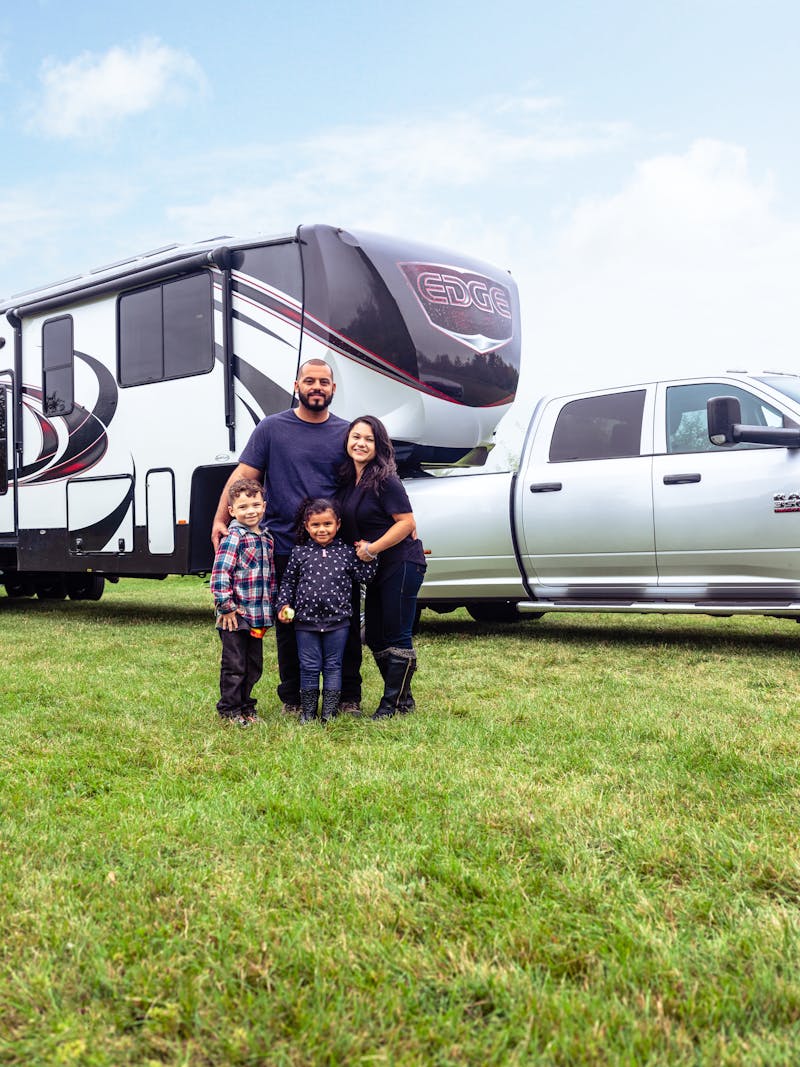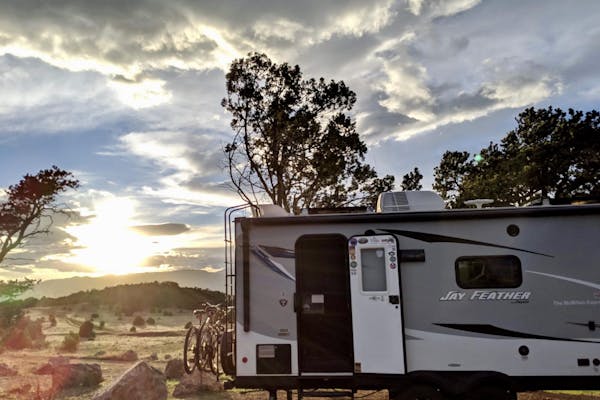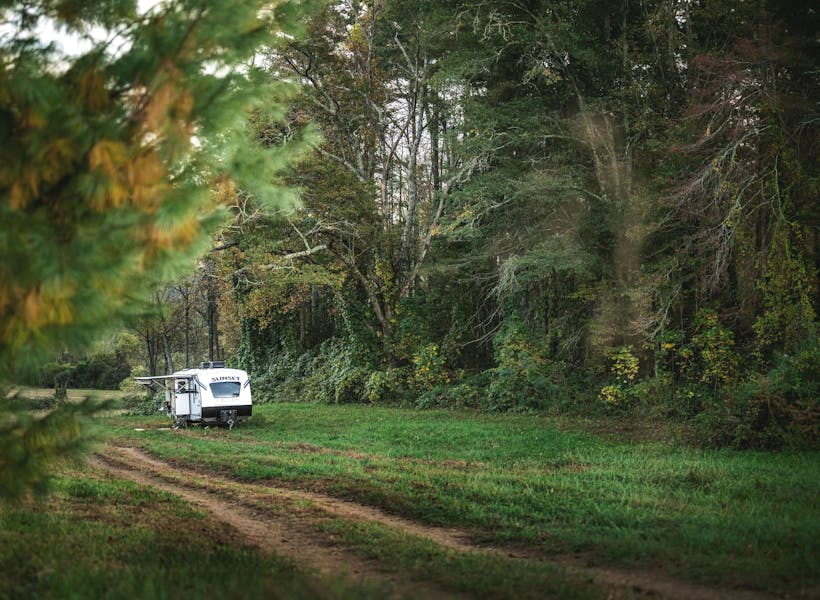Choosing the Right Tow Vehicle
We highly recommend choosing your RV before buying your tow vehicle. This way you’ll know exactly how much your RV weighs before you figure out how much weight your tow vehicle will need to pull. When figuring out how much your RV weighs, be sure to ask your dealer about both the dry hitch weight (how much the RV weighs when it is empty) and the cargo carrying capacity (the maximum amount of weight you can add to your RV). On average, your RV will weigh 1,500 pounds more once it’s been filled with water, gas and gear.
Once you know your RV’s total weight, then you can look to find a tow vehicle that matches it. If possible, opt to have a tow package added to your RV so you can maximize your towing capacity. If you already have a vehicle that you plan to use to tow your RV, make sure you buy an RV that doesn’t exceed the weight limit that your current vehicle can pull. This is where you’ll need to understand your vehicle’s towing capacity.
Towing Capacity
Towing capacity is the maximum amount of weight your vehicle can tow when pulling your RV. This number lets you know exactly how heavy your trailer can be. If you don’t know your towing capacity and try to pull a trailer that is too heavy, you could end up in a very dangerous situation so it’s vital to know your tow vehicle’s limits.
To determine maximum towing capacity, you’ll need to find out the vehicle manufacturer's weight ratings and compare them to the weight of your RV. You can usually find your vehicle’s weight rating on the inside of the driver door or in the owner’s manual. If the vehicle's ratings are higher than the total weight of the RV, then the RV is safe to tow.
Another good number to know is the Gross Combined Weight Rating (GCWR). This number is established by the vehicle’s manufacturer and represents the maximum weight the vehicle can handle with an RV attached. The GCWR takes into consideration the weight of the vehicle’s axles, wheels, suspension system, and frame, as well as the weight of the RV. You can also find the GCWR in your owner’s manual, or you can call your dealer or vehicle manufacturer and give them your VIN number and they should be able to tell you the specific GCWR.








